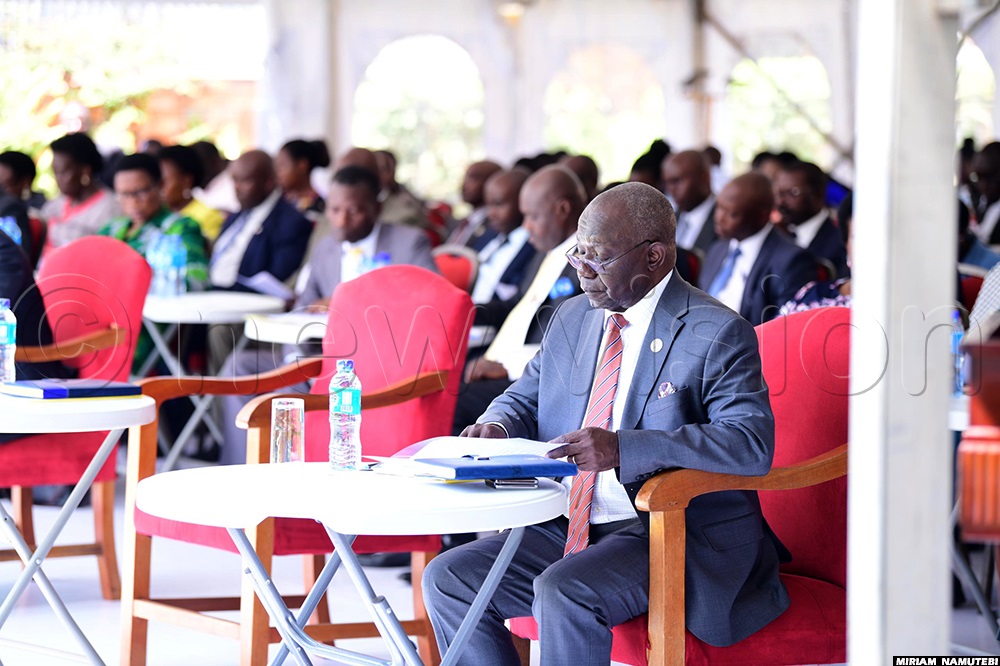Over 350,000 candidates qualified for UCE certificate—UNEB
During the release of the O'level results at State House in Nakasero, Kampala, on February 11, 2025, Odongo said candidates who failed to meet the conditions for the UCE certificate award will have "Result 2" indicated on their transcripts.
Over 350,000 candidates qualified for UCE certificate—UNEB

NewVision Reporter
@NewVision
__________________
A total of 350,146 candidates (98.05%) who sat the final national O'level examinations last year qualified for the Uganda Certificate of Education (UCE) certificate, Uganda National Examinations Board (UNEB) executive director Dan Odongo has said.
This qualification will be indicated on their transcripts and certificates as “Result 1.”

During the release of the O'level results at State House in Nakasero, Kampala, on February 11, 2025, Odongo said candidates who failed to meet the conditions for the UCE certificate award will have "Result 2" indicated on their transcripts.
He said this applies to candidates who did not sit for compulsory subjects, failed to sit for at least eight subjects, or lacked Project Work scores.

Furthermore, candidates who did not achieve the minimum level in all subjects, resulting in only achievement level E in all subjects taken, will have "Result 3" indicated on their transcripts.
According to Odongo, candidates with "Result 2" and "Result 3" on their transcripts do not qualify for a UCE certificate.

He disclosed that a total of 359,417 candidates were registered as the first cohort for the examination. Of these 177,133 (49.3%) were males, while 182,284 (50.7%) were females.
38% of candidates were from USE schools
Odongo said 136,785 (38.1%) were beneficiaries of the Universal Secondary Education (USE) programme and 222,632 (61.9%) were non-USE. A total of 357,120 (99.4%) candidates were present for the examination. Only 2,297 (0.6%) were absent.

“The rate of absenteeism continues to drop and this is a good sign,” the UNEB boss said.
According to Odongo, these are the results of the first cohort of candidates under the competency-based curriculum.


First Lady and Minister of Education and Sports in 2020 rolled out the Competency-Based Curriculum (CBC) for the lower secondary school level. This presented a requirement for assessment reforms that introduced new components of continuous assessment and project work, in addition to the existing end of cycle examination.
The Board then embarked on various activities in preparation to assess the first cohort of learners following a roadmap that had been developed.

Subsequently, the Board put in place necessary assessment tools including an in-house software code-named Assessment Management Information System, trained a total of 63,041 (43,741 male and 19,300 female) Senior Three and Four teachers throughout the country on the assessment of CA with emphasis on the use of digital assessment tools.

The training also included assessment of the Project Work, a mandatory component of the curriculum. The board also retooled 5,200 out of the targeted 8,000 existing examiners to equip them with new skills of scoring under competency-based assessment.
Odongo, however, said there is urgent need to do mop-up training in some areas where training had not been properly concluded, and to target the teachers of Senior One and Two classes.


The UNEB boss noted that the new assessment comes with a change in the reporting and certification.
He said the board in close consultations with the National Curriculum Development Centre (NCDC), came up with a reporting mechanism that presents a learner's level of achievement in each subject with a letter grade (A, B, C, D or E).

Odongo said the levels of achievement were arrived at through systematic and technical processes (statistical and psychometric) that combine the learner’s score based on Continuous Assessment done at school, and End-of-Cycle examination score in the proportion of 20%, and 80% respectively.
Additionally, he said the project work is assessed at school, and the achievement level is presented as a stand-alone on the certificate. The achievement level on the Project reveals a learner’s creative competency in dealing with actual and contemporary world problems.